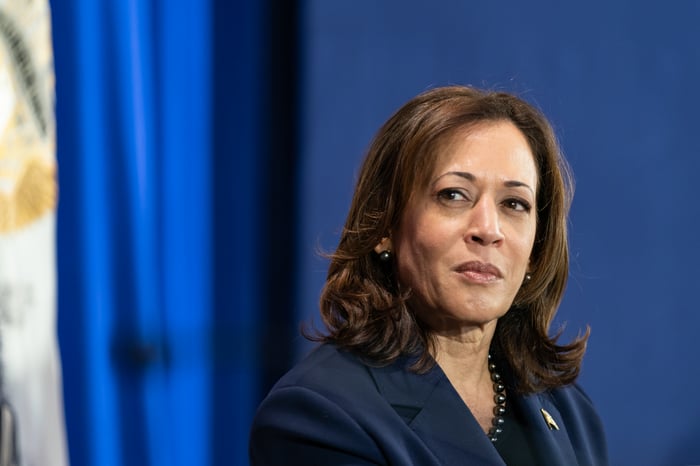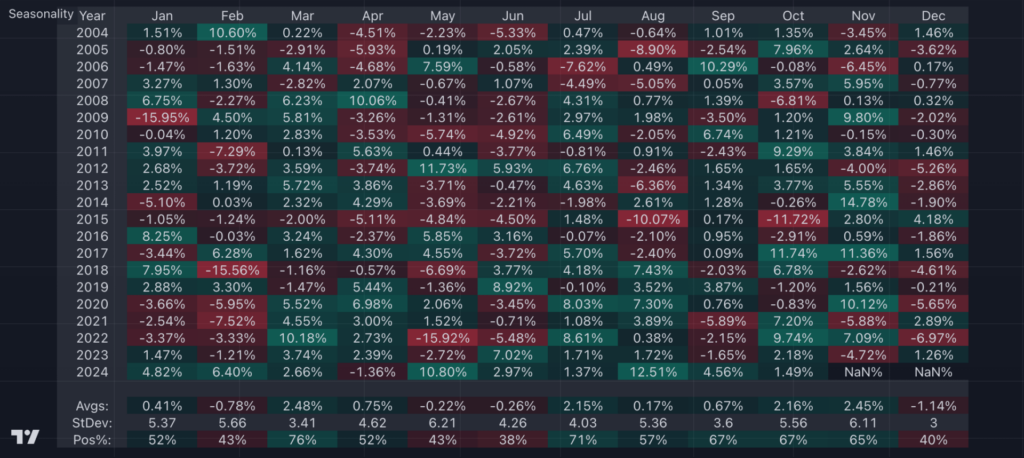With barely a month left until the decisive election date on Nov. 5, where United States citizens will cast their votes for the next president, Vice President Kamala Harris or former President Donald Trump, the financial community is paying closer attention. The outcome of this political event will have a direct bearing on economic policies and could shape the corporate landscape, inevitably influencing stock market dynamics.
One eyebrow-raising proposal on Wall Street is Harris’ intention to raise the corporate tax rate by an ambitious one-third, from the present 21% to 28%. While the current corporate tax rate is at its lowest level since 1939, the prospect of a 33% increase has the potential to jar the stock market, albeit for a perceptibly obscure reason.
Underlying Stock Market Impact of Corporate Tax Rate Hike
Harris’ move to hike business taxes is rooted in the persistent and escalating federal deficits that the government has struggled with for decades.
Except for a brief respite from 1998 to 2001, the federal budget has been in deficit every year since 1970. As of now, the national debt stands at a staggering $35 trillion, with an annual interest cost of servicing this debt amounting to approximately $1.05 trillion as of August 2024, based on the U.S. Department of the Treasury’s figures.
Projections by the Treasury Department indicate that the proposed increase in the corporate tax rate could boost federal tax revenue by a cumulative $1.35 trillion over the next ten years.
Nevertheless, the unintended outcomes of increased corporate taxes on Wall Street could be far-reaching.
Logically speaking, a climb in the corporate tax rate would translate to businesses having less liquidity to allocate towards essential business operations. This could translate to sluggish hiring rates, diminished acquisition activities, and a reduced investment in research and development – integral components that typically bolster companies’ bottom lines.
Beyond this, there’s a subtler concern that may precipitate a nosedive in stocks if the corporate tax rate undergoes a 33% escalation. The reduced pool of capital available to publicly traded companies could pose a threat to a key driver of earnings growth in recent times: share buybacks.
For companies boasting robust or growing net income figures, share repurchases often serve as a catalyst for boosting earnings per share (EPS). As businesses buy back shares over time, the count of outstanding shares decreases, inherently elevating EPS and rendering the stock more appealing to investors.
For instance, in the trailing 12 months ending March 2024, companies of the S&P 500 witnessed $816.5 billion in buybacks, marking a decline from the peak of $1.01 trillion for the period ended June 2022, according to data from S&P Global.
Of significant concern, over half of the buybacks conducted in the first quarter of 2024 could be linked to the 20 largest companies by market capitalization in the S&P 500. Buybacks have been instrumental in driving earnings growth for some of America’s most influential corporations. However, this trend might falter if Harris succeeds this November and implements the proposed increase in corporate tax rate.
Take, for example, the largest publicly traded entity globally by market cap, Apple (NASDAQ: AAPL), which has repurchased a total of $700.6 billion worth of common stock since 2013, leading to a 42.2% reduction in the outstanding share count.
Had Apple refrained from executing any buybacks over the past 11 years, the consensus EPS for fiscal 2024 (concluded on Sept. 30) would have plummeted below $4, a stark contrast to the current $6.68. Undoubtedly, few companies have witnessed their bottom lines swell more considerably in recent history due to share repurchases than this Wall Street behemoth.
In an interesting turn, research from Fidelity unveiled that following each corporate tax hike since 1950, the benchmark S&P 500 observed an average uptick of 13%. While this doesn’t definitively assure stock market growth in case of Harris’ corporate tax rate increase from 21% to 28%, historical precedent mildly favors a continuation of the current bullish market.
Heightened Concern Beyond Diminished Buybacks
Despite the prevailing narrative that share repurchases have artificially inflated EPS for leading corporations on Wall Street, the potential slowdown in buyback activities due to a heightened corporate tax rate is a cause for genuine concern.
The Peril of Surging Stock Valuations in Financial Markets
Ringing alarm bells on Wall Street, the real threat lurking within the financial markets is not the immediate political uproar but a historical anomaly that could send equities tumbling into turmoil. The driving force behind a potential correction or bear market transcends any election outcome. Within the intricate tapestry of stock market dynamics lies a treacherous trigger – a stock market that stands perched on the precipice of historic price levels, a ticking time bomb.
The Deceptive Mirage of Stock Valuation Metrics
Diving deep into the murky waters of stock valuation metrics, investors often rely on the conventional Price-to-Earnings (P/E) ratio as a compass to navigate through the labyrinth of market uncertainties. However, this traditional metric, fixated on Trailing Twelve Months (TTM) earnings, fails to capture the panoramic view of market fluctuations adequately. The true revelation lies in the Shiller P/E ratio, illuminating a broader spectrum with its cyclically adjusted price-to-earnings ratio, a beacon in the stormy seas of market volatility.
Shiller P/E: A Historical Odyssey of Market Turmoil
Embracing a historical lens, the Shiller P/E ratio delves into a decade-long retrospect, smoothing out the ripples of unforeseen cataclysms like the recent pandemic-induced lockdowns. As Wall Street grapples with the looming shadows of uncertainty, the Shiller P/E ratio unveils a stark reality. With the closing bell echoing on October 3, the S&P 500’s Shiller P/E ratio stood at an astronomical 36.6, towering over its historical mean of 17.16 since the dawn of January 1871.
The Impending Storm: A Harbinger of Market Peril
Gazing back into the annals of history, an ominous pattern emerges. The S&P 500’s Shiller P/E ratio has breached the ominous threshold of 30 merely six times during bull market rallies. After each foreboding occurrence, the markets witnessed a cataclysmic plunge, with indices like the Dow Jones Industrial Average and the Nasdaq Composite shedding a staggering 20% to 89% of their value.
Descending into the abyss of relentlessly soaring valuations, the markets teeter on the brink of an impending storm. The Shiller P/E ratio, while not a crystal ball for market timing, has impeccably forecasted past downturns in the S&P 500, Dow Jones, and Nasdaq Composite, painting a grim picture of the road ahead.
The Looming Shadow: Corporate Tax Policy vs. Market Realities
Although political maneuvers like Kamala Harris’ proposed corporate tax hike loom on the horizon, the true nemesis haunting investors remains the exorbitantly expensive stock valuations. In this turbulent landscape, the riddle of historically lofty valuations looms large, a specter unlikely to dissipate in the foreseeable future.
In the labyrinth of market uncertainties, the tempest of spiking valuations remains a formidable adversary that investors must brace themselves against, lest they risk being swept away in the turbulent tides of market unrest.




